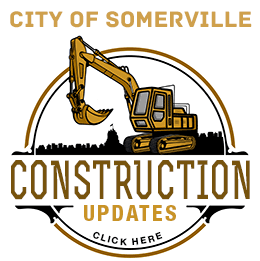(The opinions and views expressed in the commentaries of The Somerville News belong solely to the authors of those commentaries and do not reflect the views or opinions of The Somerville News, its staff or publishers)
By Tim Talun
It was once believed that the harm caused by building the elevated McGrath highway was justified by the collective benefit it would provide. Today it has been agreed that this overpass will be torn down and reconfigured to fix this mistake, but a few hundred feet down Washington Street an even more questionable argument has been made that the collective benefit provided by a housing development is more important than the concerns of those that live around it.
On July 18, the controversial development proposed by the Somerville Community Corporation on the site of the Boys and Girls Club (181 Washington Street) and by Cathartes Private Investments on the adjacent Cota Funeral Home (197 Washington Street) was approved by the Somerville Planning Board. It was approved over the objections of nearly everyone living around the project, who simply asked for buildings they could be proud to live next to in a project that meets the goals of the Union Square Zoning Ordinance and the Somervision Comprehensive Plan. This wasn’t just NIMBY’s opposed to change, but real suggestions for improving this project. Everyone should be concerned if this is the precedent for future development in Union Square and around Somerville.
In order to gain approval from the Planning Board which asked the developers to respond to the concerns of the surrounding community and meet the minimum requirements of zoning, the size of the proposed buildings was reduced, removing 10 units from the original 84. This is a significant change, but does not address the majority of concerns about the project. The real problem has been a lack of vision in conceiving what buildings on this site can and should be.
Since this project was first proposed, neighbors have struggled to have their voices heard. The Somerville Community Corporation calculated that they would be better off treating their future neighbors as opponents, excluding the community’s ideas and concerns from their plans and doing the absolute minimum required by zoning while making minor concessions at the end as “payback” for these failures. If their primary goal was simply to get the most housing units built, this calculation was correct. But if their goal was to create the best possible housing integrated into the surrounding neighborhood, this calculation was wrong.
While cities such as Seattle and Portland are deliberately slowing and decreasing traffic on their residential side streets to make them friendlier for kids to cross and play on, this project will deliberately route traffic through the residential streets of prospect hill that are full of children and families.
Innovative affordable housing projects around the country are finding new ways to provide active public space that brings residents together – Via Verde, recently constructed in the Bronx, provides a landscaped courtyard and rooftop with communal garden plots and groves of fruit trees that will let tenants grow their own fruits and vegetables. But here in Somerville, the project on Washington Street will take the existing green space at the historic Cota funeral home and turn it into a parking lot.
In spite of resident concerns and the recommendations of the Design Review Board, the sunken plaza at the SCC building entrance has not yet been revised to address concerns about safety and visibility. Retail space is still too small, and there is still no street level bicycle parking proposed for the SCC building, making bicycle transportation less viable for these residents. While the project has been approved, some of these changes still can and should be made.
It’s unfortunate that the SCC and their supporters who say they care about housing for working families preferred to fabricate a conflict over the merits of “affordable housing” rather than starting this project by advocating for the best possible model of family housing.
Those who truly care about “affordable housing” need to question the outdated vision behind this project. Does the demand for income-restricted housing justify spending every dollar to create the maximum number of housing units or is it more important to create buildings that provide common areas to encourage community and outdoor spaces and buildings that encourage active and healthy living?
Mayor Curtatone’s vision, shared in their own way by just about everyone, is a Somerville that is an “exceptional place to live, work and raise a family.” The values that guide this vision have been set out in the Somervision Comprehensive Plan. These goals guide many wonderful things happening throughout the city, but actually achieving this vision also requires making sure that new development does more than simply pander to these values, and finds ways to realize them.
The ‘Innovation City’ needs innovative developments that don’t take away from what is already great about the neighborhoods they are built in. These buildings are more than the ideas used to justify them – they will be with us for just as long as the McGrath highway overpass. It’s critical we make sure what is built today isn’t regretted in the same way 50 years from now.
















Reader Comments